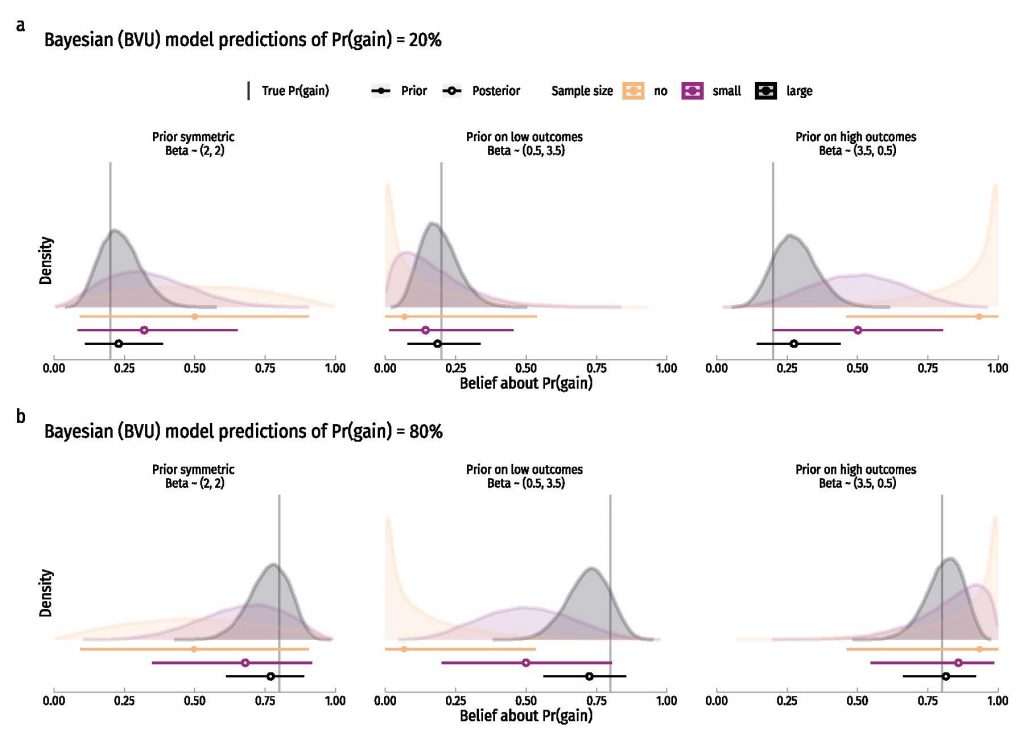Topic
Risk
Most everyday decisions involve information about risks or uncertainties.
Setup
Design
R, Stan
Realized in R-Statistics, RStan (brms)
Modeling Human Risk Learning given two Information Designs
We modeled the impact of information design on how people learn about risks—risks meaning probabilities (like drug side effects, vaccine efficacy, asset returns, pension savings, and many more).
Understanding the risks of our choices matters for well-informed decision making. To gain empirical insights into the cognitive processes (thought and memory processes) of how and when people grasp small and large risks, we used a data-based and cognitive machine-learning approach. In two data-sets, we determined what kind and amount of experience or numerical information was necessary such that particularly small risks would be understood well. In an economic setting, we found that there are two distinct types of learning about risks, and they differ in how they deal with incoming experience about risks. This cognitive machine-learning analyses explains the paradox that some people failed to learn about the risk with experience.
Find the code on GitHub, read the scientific paper in QJExpPsych.







